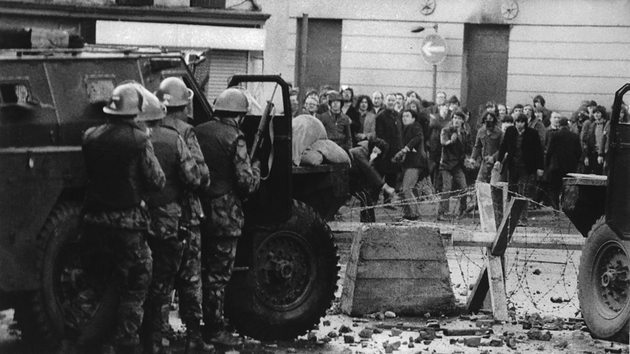Bloody Sunday it refers to two historical events.
Can designate the "Bloody Sunday" occurred in St. Petersburg, Russia, on January 9, 1905, when protesters were killed by the royal guard.
It is also the name given to the massacre committed by the British army, on January 30, 1972, against members of a civil rights march in Northern Ireland.
Bloody Sunday in Russia (1905)
On January 9, 1905, a Sunday, a large demonstration marched towards the Winter Palace to deliver to Tsar Nicholas II (1868-1918) a series of petitions.
Led by the priest George Gapon (1870-1906), the participants were unarmed, singing religious hymns and carrying icons of saints.
Gapon intended to deliver a letter to the emperor requesting the reduction of the working day to 8 hours, freedom of assembly, the election of a National Assembly, among other measures.

The royal guard did not let the crowd near the Winter Palace and opened fire. More than 1,000 people died and around 5,000 were injured.
Bloody Sunday served to mobilize important figures of the Russian opposition who were in exile as Lenin (1870-1924).
Faced with brutal repression, protests against the autocracy increased and in October 1905 workers' representatives from the city of Moscow met for the first time.
They called themselves "council" which in Russian means soviet. Then they called a general strike that paralyzed the country's main cities.
In the face of disturbances and another massacre that took place in October, the tsar ended up giving in and allowing elections to be held for an assembly the following year.
In turn, the members of the soviets, among them Leon Trotsky (1879-1940), were exiled.
The Bloody Sunday episode is considered the beginning of the Russian Revolution.
Bloody Sunday in Ireland (1972)
Irish Bloody Sunday took place on January 30, 1972, in the city of Derry, Northern Ireland.
On this day, a demonstration of civilians went through the streets towards the City Hall to protest against measures imposed by the British government. Among them, the possibility of arresting persons suspected of participating in the IRA (Irish Republican Army) group stood out without charge.
The British army was unwilling to let the demonstrators reach their destination and they barricaded themselves so that the march would not advance.

Indignant, some participants shouted, threw bottles and other objects at the soldiers. The response was immediate and the military fired into the crowd killing 14 people, five of whom were shot in the back. Twelve people were also seriously injured.
The British accused the participants of terrorism and they made a big campaign to justify their violent attitude. However, the victims' relatives met every January 30 to demand redress from the British government.
Thus, in 1998, the government of Labor Prime Minister Tony Blair agrees to open a new inquiry into “Bloody Sunday”.
The conclusions were only presented in 2010 by Conservative Prime Minister David Cameron, at a historic session of the British Parliament. Cameron declared that the victims were innocent and that the behavior of the British army had been "unjustifiable".
Sunday Bloody Sunday
The massacre of innocents caused outrage in the music world and composer Paul McCartney composed “Give Ireland Back To The Irish” as early as February 1972. In turn, John Lennon (1940-1980) wrote the song "Sunday Bloody Sunday" this same year.
However, the song that would immortalize these events would be performed by Irish band U2 in 1982 and would also be called “Sunday Bloody Sunday”.
